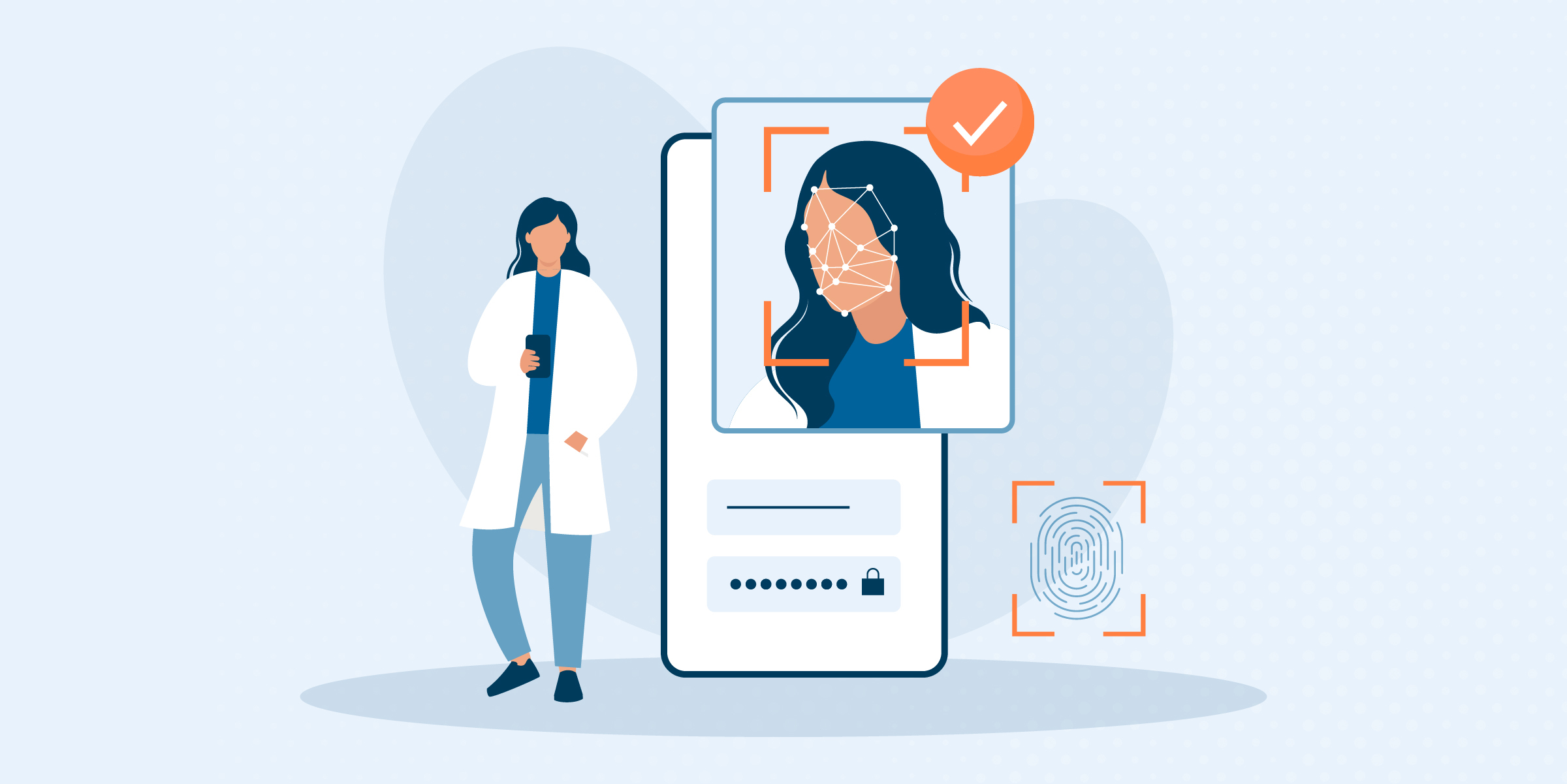As healthcare systems become increasingly digital and interconnected, shifting toward embracing biometric multi-factor authentication is crucial for safeguarding patient and practice information.
As most healthcare professionals likely know, on February 21, 2024, Change Healthcare experienced a major network interruption as a result of a cybersecurity attack. The healthcare revenue and payment cycle management company halted almost all services, including claim submissions, ERA (Electronic Remittance Advice) receipts, eligibility checks, and statement printing services. This service outage essentially sent healthcare providers back in time—forcing them to return to submitting claims via payer portals, manually posting EOBs (Explanation of Benefits), transmitting faxes, and spending hours on the phone each day.
The impact of this catastrophic outage was felt across the country. The American Medical Association reported that 80% of physicians lost revenue from unpaid claims, and 55% had to use personal funds to cover practice expenses. Smaller practices, especially those with 10 or fewer physicians, were particularly impacted by the outage.
Notably, this outage was attributed to a lack of multi-factor authentication (MFA) policy. The MFA method requires more than one source of protection when authenticating access to an account, and can include any combination of access protocols, such as passwords, biometrics, and codes. As healthcare systems become increasingly digital and interconnected, shifting toward embracing biometric multi-factor authentication is crucial for safeguarding patient and practice information.
Why MFA and Biometrics Matter in Healthcare
Healthcare software systems contain a wide range of sensitive and private information, from personal medical histories to billing details. Maintaining the privacy of these systems is imperative for preventing and thwarting cybersecurity attacks. If this data is compromised, it could have serious implications for patient privacy, as demonstrated in the Change Healthcare outage.
Simply put, traditional security measures are no longer enough. This is where MFA comes in.
MFA adds layers of extra security by requiring multiple forms of authentication. Instead of simply using a password (which can easily be hacked), users are prompted to provide an additional factor when logging in, such as a code sent to their phone by text message or, more effectively, biometrics like facial recognition. Having multiple factors for authentication significantly reduces the risk of unauthorized access. According to Microsoft, 99.9% of compromised accounts lack MFA.
Solving Security Risks with Biometrics
Biometrics is one of the strongest factors available for multi-factor authentication. It identifies users based on unique traits such as fingerprints, facial features, or iris patterns. While passwords can be hacked and keys can be copied, these factors are more difficult to bypass and fabricate, which enhances security and keeps sensitive health information protected.
The implementation of biometric security systems helps approved healthcare professionals quickly gain access to patient information while preventing unauthorized users from accessing the same data. It’s convenient, user-friendly, and helps save time that can be better spent on improving patient care.
Biometrics has emerged as a security solution because it provides a reliable way to verify identities, as well as the added security it offers in other areas. A quick facial or fingerprint scan can ensure data is connected with the right person or that an account is only being accessed by the appropriate user. By exploring and adopting this technology, the healthcare industry will eventually be able to streamline administrative processes while preventing potential security risks.
The 3 Steps of the Biometric Authentication Process
Biometric authentication is essentially a three-step process that includes:
- Enrollment: During this first step, the user’s biometric factors (e.g., fingerprint, facial features, or iris patterns) are recorded through a sensor or scanner and stored in a database. During enrollment, it’s important to verify the user’s identity and accurately attribute the biometric data to the correct person.
- Verification: The user’s biometric factor is read and compared to the data in the database. If you use facial recognition or a fingerprint scanner to log into your smartphone, you’re likely familiar with the verification step. While built-in device biometrics are a helpful security tool, they often aren’t enough to meet compliance standards in healthcare. There must be an extra layer of security measures to protect against advanced attacks.
- Authentication: The user receives access if the captured biometric factor matches the stored data. Otherwise, access is denied.
Consumers already widely use biometrics with smartphones, making the authentication method relatively intuitive for patients and healthcare staff. These methods are also less prone to errors and allow users to more quickly access the information, resources, or individuals they’re looking for.
At RXNT, we are leading the way by exploring the potential benefits of biometric technology in our systems. Connect with our team to discover how we can help safeguard your patients, practice, and revenue.






